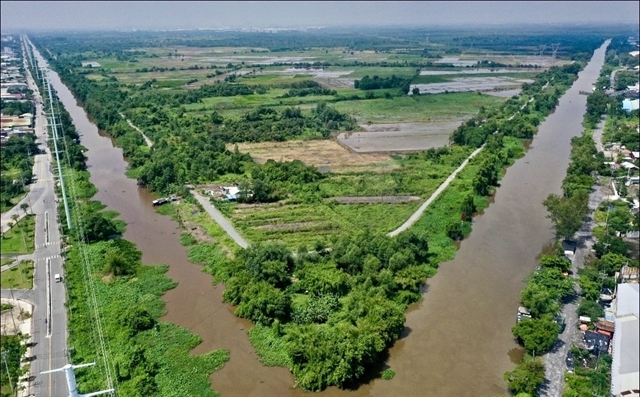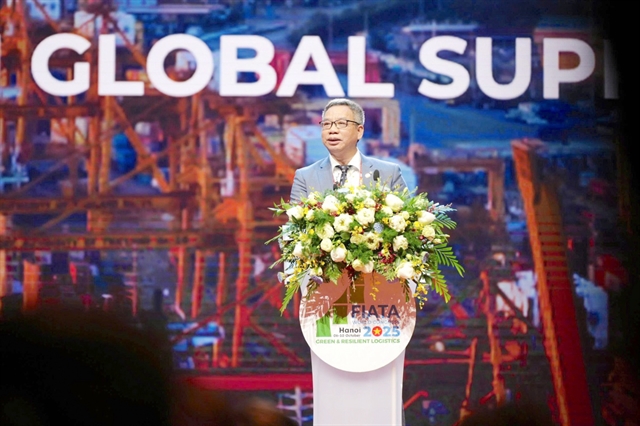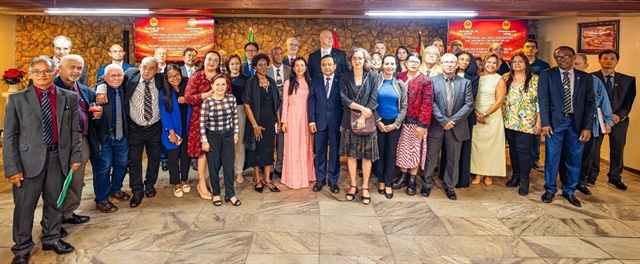 Economy
Economy

 |
| Đào Trọng Khoa, chairman of the Vietnam Logistics Business Association (VLA), delivers a speech at FIATA World Congress 2025 in October. — Photo courtesy of FIATA organiser |
HÀ NỘI — As the global supply chain pivots toward sustainability, green logistics is no longer an optional direction but a mandatory transformation for Việt Nam. Speaking to reporters on the sidelines of a recent conference, Đào Trọng Khoa, chairman of the Vietnam Logistics Business Association (VLA), shares his perspectives on the opportunities, challenges and strategic directions for the country's logistics sector as it embraces greener, more efficient operations.
Why is green logistics becoming such an urgent issue for Việt Nam's logistics sector?
Green logistics is not simply a trend. It is now a global requirement, reflecting fundamental changes across the logistics industry worldwide. In Việt Nam, this shift has moved far beyond being a strategic orientation. It has become a mandatory narrative of today's logistics transformation.
The priority now is to identify practical solutions and define who these solutions must serve. Việt Nam's logistics landscape is dominated by small and medium-sized enterprises (SMEs), and any transition must be tailored to their realities.
When SMEs represent the majority of the sector, understanding how they can transform becomes the core basis for policy recommendations to the Government and ministries.
The national strategy clearly defines green logistics goals and sets concrete targets for energy transition, digital technology adoption and the integration of green technologies into logistics operations.
This strategy outlines the country's logistics vision toward 2035, with an extended outlook to 2045.
These commitments reflect Việt Nam's determination to accelerate both digital transformation and green transformation in logistics.
Many businesses worry that going green increases costs. How can logistics be greener and more competitive?
Cost concerns are valid, but they don't represent the whole picture. Việt Nam's logistics costs have already improved significantly, with current levels even lower than the ASEAN average.
Digitalisation and green transformation will boost operational efficiency, reduce waste and improve resource utilisation.
Green transformation is not merely a cost issue — it generates substantial long-term benefits. Improved efficiency will ultimately lower logistics costs and strengthen the competitiveness of the national economy.
Inland waterway transport is seen as a key method in green logistics. How do you assess current efforts to promote it?
Waterway transport — along with rail — is inherently eco-friendly, capable of carrying large volumes at a lower cost and with a lower environmental footprint. Việt Nam has a strong foundation to expand waterway logistics.
Government planning aims to increase inland waterway transport's market share to over 30 per cent, compared to the current rate of roughly 8 per cent. To support this shift, logistics enterprises, especially in Hải Phòng, are aggressively pushing inland waterway and coastal shipping services.
MaxStar Logistics, a VLA member company, is one of the pioneers in barge transport and coastal shipping, bringing these services closer to industrial zones and manufacturing hubs.
I believe these companies are moving in exactly the right direction.
The industry must continue prioritising solutions that SMEs can realistically adopt, ensuring policies are aligned with the needs of businesses on the ground. Strengthening digital infrastructure, promoting cleaner transport modes and developing supportive regulations will be crucial.
Việt Nam's green logistics journey must balance ambition with practicality. With the right support mechanisms, the sector can transform effectively and sustainably. — BIZHUB/VNS




